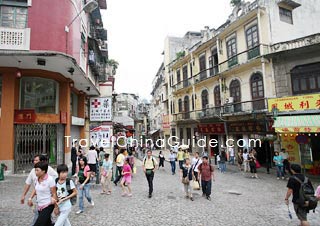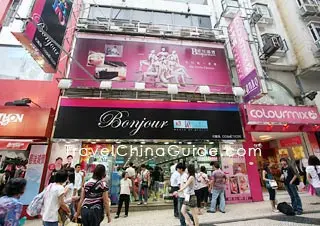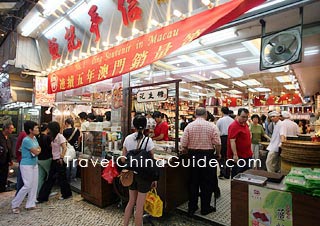Sipadan Island is the only oceanic island in Malaysia. It is well-known for its international diving fraternity as one of the world’s five best dive sites. Rising 600 meters from the seabed, Sipadan Island is located in the Celebes Sea east of the major town of Tawau and off the coast of East Malaysia on the Island of Borneo. This beautiful oceanic island was formed by living corals growing on top of an extinct volcanic cone that took thousands of years to develop.
Sipadan Island is located in the centre of the richest marine habitat in the world, the heart of the Indo-Pacific basin. In this ecosystem, over 3,000 species of fish and hundreds of coral species have been classified.
In the waters around Sipadan, rare diving scenes are frequently seen such as schools of green and hawksbill turtles nesting and mating, schools of barracuda and big-eye trevally in tornado-like formations, pelagic species such as manta rays, eagle rays, scalloped hammerhead sharks and whale sharks. Therefore, Sipadan is popular with its unusually large numbers of green and hawksbill turtles which gather there to mate and nest. And it is not really rare for a diver to see more than seventy turtles on each dive.
Besides that, there is a mysterious turtle tomb lies underneath the column of the Sipadan Island. The turtle tomb was formed by an underwater limestone cave with a labyrinth of tunnels and chambers that contain many skeletal remains of turtles that have become lost and drown before finding the surface.
Currently, this beautiful island is in the care of Wildlife Department. The Wildlife Department has stationed several park rangers to oversee the state of nature of the island. In order to protect the world’s unique flora and fauna on the island as well as the underwater world, the Malaysian Government has made a decision that from the year 2005, no more overnight facilities shall be on the Sipadan Island itself. This implies that all dive operators on the Sipadan Island have to move and diving at Sipadan will be conducted from other destinations likes Mabul and Kapalai.
You really shouldn’t go to this place for holiday unless you are a scuba diver or you like snorkeling very much. There is nothing much to do on this island except enjoy yourself on the beautiful sandy beaches and watching the coral reef with its rich marine life. Besides that, there is no resort and nothing to buy on the island.
The name of Sipadan is a legend in the diving circles, conjuring the images of patrolling hammerhead sharks, millions of colorful reef fish and, above all, dozens of sea turtles swimming peacefully everywhere. As one of the five top diving destinations in the world, Sipadan, the small rainforest-covered tropical island rising from a 700 meter abyss in the Celebes Sea, is an ultimate diving spot that a committed diver cannot miss.
Diving at Sipadan is certainly world class, so this place has attracted many diving lovers. It is well-known that divers are able to see about 150 species of butterfly fish within a single dive in Sipadan. Utilized by marine biologists as the indicators of coral reef health, a great number and species diversity of butterfly fish implies the abundance and diversity of corals. Pristine coral reefs are also landlord to other reef dwellers such as angelfish, snappers, wrasse, sweet lips, and parrotfish as well as the larger pelagic, barracudas, mantas, whales, dolphins and schools of hammerhead sharks.
Besides that, Sipadan Island is well-known with its vast numbers of Green and Hawksbill turtles which feed and breed within its waters before the females climb ashore to lay their eggs in the white sandy beaches. Others than that, diving near the coral reefs surprises you with incredible phenomena likes thousands of schooling chevron barracuda and big-eye trevally or ‘Jacks’. Moreover, floating inside such a tornado of fish is a truly breath-taking experience that is hard to beat.
On the other hand, Sabah is becoming one of the world famous location for ‘muck diving’. ‘Muck diving’ is used by divers to describe the search for rare and exotic small marine animals. Numerous rare and newly identified gobies can be found living in the corals, sand, mud and mangroves of Sabah, along with the rarely seen mimic octopus, neon patterned blue-ringed octopus, delicate flamboyant cuttlefish, psychedelic mandarin fish and ghost pipefish.
It is really worth to have a dive at Sipadan. Generally, the rate for three dives at Sipadan is just around RM260, plus RM40 for equipment (if required). Perhaps the rates might vary slightly among different operators. Boat transfers and packed lunch are included as well. Therefore you no need to worry about the food as there is no restaurant on the island.
It is vital to note that you need to have a permit from Sabah Parks in order to access the island, which will cost you RM40. Only 120 permits will be given out every day and they are typically obtained by the dive operators. You must make sure that the diver operator you choose is diving at Sipadan with permits, as some companies have been caught diving at the island without permits. You should check diver reviews of dive operators in the area before choosing as there are many have had customer complaints regarding faulty equipment.
Besides that, another tourist attraction of Sipadan is snorkeling. Eventually from the beach, the reef is easily accessible and parts of the reef further out can be reached by boat. There are a few dive tour operators bring snorkelers to the island at an all-inclusive rate of around RM170.
You may make your way there any time all around the year but due to Sipadan is now a protected site, there is only 120 dives are allowed on Sipadan in a day. Therefore, it is highly recommended to dive as early as possible to beat the crowds and increase your chances of getting on the roster to dive.
Previously, Sipadan Island was used to have resorts. In order to protect the environment, all the resorts were forced to close down around the year 2002. Hence, to dive on Sipadan, you have to stay somewhere nearby. There are resorts on the nearby islands likes Mabul which is 25 minutes away by boat and Kapalai which is 15 minutes away by boat.
As recommended, Sipadan-Kapalai Dive Resort is the best place to spend your night. It is just a few minutes by boat from the islands of Sipadan. Planned and built in full style as an airy, comfortable, sunny water village with no land in sight, Sipadan-Kapalai Dive Resort boasts a mile-long sandbank of powdery white sand where you can suntan at complete leisure while gazing out to the miles of brilliant turquoise stretching into the horizon offering the purest image of natural serenity. With the combination of sun and water in a unique and serene setting with friendly staff, Sipadan-Kapalai is an ideal stopover for you to have a great holiday experience.
There are no restaurants on the island. You have to bring your own lunch and snacks there. Besides that, you are reminded to bring along your own water and drinks with you.
There is no nightlife on the Sipadan Island as it is not allowed to stay overnight on the island.
- Diving
- Go to sandy beaches
- See the coral reef
-‘Muck diving’
- Snorkeling
You should stay away from those companies that diving on Sipadan without permits from Sabah Parks. Make sure the diver operator you choose has diving permits from Sabah Parks.
Getting to the Sipadan Island requires some effort. The best way for first timer is that by plane. At first, you may fly to Tawau from either Kuala Lumpur which is about three hour’s flight or from Kota Kinabalu which is about 50 minutes flight. Then, continue your trip by minivan or taxi to the port town of Semporna which will take you about one to two hours. And from there you may go to Sipadan itself by fast boat, which only spend one hour.


















 The City of Venice
The City of Venice






















